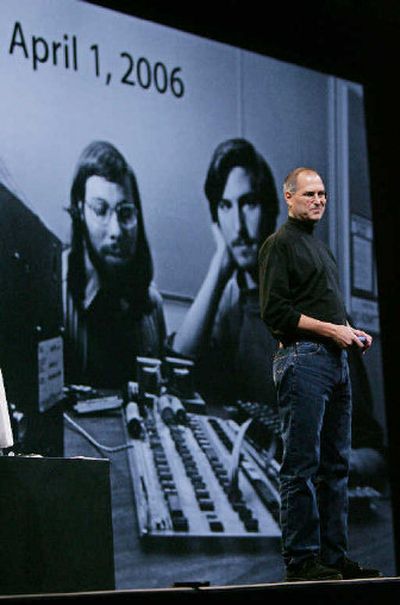Bright, shiny Apple turns 30

SAN JOSE, Calif. — Silicon Valley’s historic orchards have virtually disappeared but one notable fruit still stands: Apple.
As the storied company celebrated its 30th birthday last weekend, Apple Computer Inc. had brushed off its bruises from product failures to emerge with a shine that’s more than skin-deep.
Its brand name and products — from the Mac to the iPod — resonate as both hip and innovative.
For all of its recent successes, however, Apple also has its share of challenges ahead as it matures into a digital media provider.
In the digital music arena, where Apple dominates, French lawmakers are angling to force the company to change its successful way of chaining its popular iPod player to its online iTunes Music Store.
Recording labels are also chafing at Apple’s insistence that its song downloads remain 99 cents apiece. Apple’s CEO Steve Jobs rebutted by calling the record industry “greedy.”
In the computer space, where Apple is seeing its best sales in years, information-security firms have discovered a few new vulnerabilities in its Macintosh operating system.
Apple’s journey began in 1976 when two college dropouts — Jobs, a marketing whiz, and his friend Steve Wozniak, an engineering genius — filed partnership papers on April Fools’ Day, their eyes set on building and selling personal computers. Their first product was a build-it-yourself computer kit. A year later the Apple II microcomputer was born. It was a hit, and many credit the Apple II as the genesis of the personal computer revolution.
Cupertino, Calif.-based Apple’s cultural and technological influences only grew from there. The Apple Lisa, introduced in 1983, used an innovative icon- and mouse-based graphical user interface that laid the foundation of today’s computers. But the Lisa was a commercial flop due to its high price— $9,995.
The hugely successful — and more affordable — Apple Macintosh followed in 1984, giving birth to desktop publishing by allowing users to create their own newsletters or printed material.
Microsoft eventually copied the user-friendly graphical interface and licensed its Windows software to manufacturers who copied the IBM PC. The clones proliferated while Macintosh sales were hobbled by Apple’s decision not to license its software to other hardware makers.
The next decade was punctuated by an internal power struggle that forced Jobs to leave the company, a series of execution missteps, and botched projects — most notably the Newton, a handheld computer.
In 1996, when Apple was struggling for a foothold in the personal computing market, the company bought Jobs’ second computer company, NeXT, returning the prodigal son to the fold.
Jobs led the company’s resurrection with one breakthrough after another — first with the iMac, then the slick new OS X operating system, then the iPod music player, then the market-leading online iTunes store.
Apple’s iPod and iTunes franchises have popularized the notion of music on-the-go. They also spawned the modern explosion in podcasts, or self-made broadcasts of audio programming over the Internet to portable gadgets.
Today, Apple’s self-propelled reputation as David fighting the Goliath of Microsoft and the rest of the PC industry belies reality.
Apple may still hold roughly only a 4 percent share of the worldwide PC market, but analysts expect that the iPod and its new computers based on Intel Corp. chips will help grow Apple’s slice of the PC market.